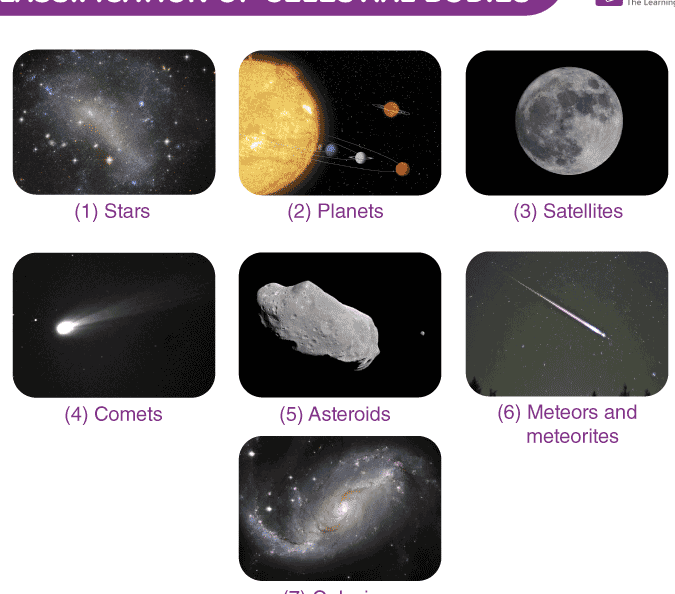
The names of the planets in our solar system have mythological origins. This is because ancient astronomers, particularly the Greeks and Romans, were familiar with many of these celestial bodies. As a result, the planets were named after ancient deities. When new planets were discovered, they were also given names in accordance with this tradition.
Planets in the Earth’s Group
The solar system contains a total of 8 planets that have been discovered by mankind. The first four planets, which share similar characteristics, have been grouped together and are known as the Earth’s inner group. These planets include Mercury, Venus, Earth, and Mars. Ancient astronomers carefully observed these planets and noticed distinct features that led to the selection of their names.
- Mercury, the smallest planet in the solar system, is also the closest to the Sun. It is known for its incredibly fast orbit around the Sun. The planet was named after Mercury, the ancient Roman god of commerce. In addition to commerce, Mercury was also recognized as the messenger of the gods and was often depicted wearing winged sandals, which allowed him to move swiftly across the sky.
- Venus, the second planet from the Sun, is known for its radiant appearance. It shines brighter than any other object in the Earth’s sky, except for the Sun and the Moon, and can be observed without the aid of a telescope in the darkness. It is the only planet that takes its name from a female deity. According to ancient Roman mythology, Venus is the goddess of love and beauty.
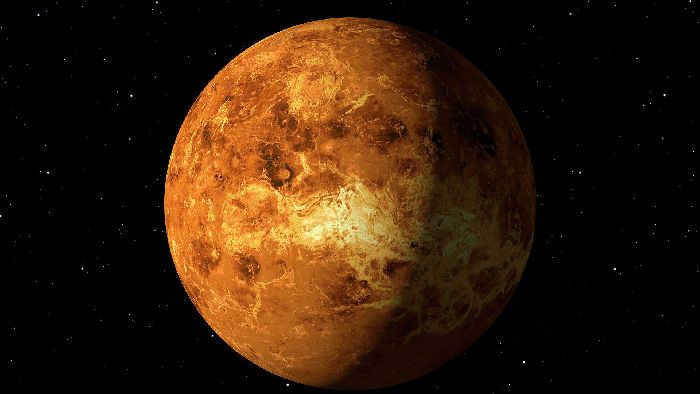
- Earth is the third planet from the Sun, and it is the only planet in our solar system that has all the necessary conditions for supporting life. Unlike other planets, the name of Earth is not derived from ancient mythology. The most likely hypothesis about its origin is that it is named after the very soil that covers its surface. In short, for a long time, people did not consider Earth to be a planet because they believed it had a flat shape similar to a pancake covered with soil (earth).
The moons of planets, which were discovered by astronomers much later after the invention of the telescope, started to be named after mythological characters, literary heroes, or the researchers of these celestial bodies.
Giant planets
After the Earth group of planets, we come across the incredible giants, which are known for their tremendous size. This group includes:
- Jupiter – the fifth planet from the Sun and the largest planet in our solar system. This impressive size did not go unnoticed by early astronomers, who gave the planet its name in honor of Jupiter, the supreme god and father of all gods in ancient Roman mythology.
- Saturn – the sixth planet from the Sun and famous for its large and bright rings. These rings were associated by ancient Romans with a large sickle, which was believed to be wielded by Saturn, the patron saint of farmers.
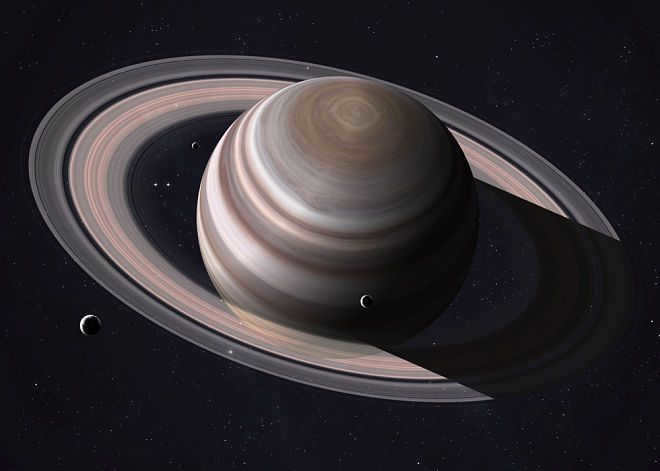
- Uranus, the seventh planet from the Sun, boasts the most frigid atmosphere of all the planets. Unlike its counterparts, which are named after ancient Roman gods, Uranus is unique in that it is named after an ancient Greek god. In Greek mythology, Uranus was revered as the sky god, and he held the esteemed titles of father of the Titans and husband to Gaea, the Earth. As such, he also held the roles of grandfather and uncle to the Olympian gods.
- Neptune, the eighth and most distant planet from the Sun, derives its name from the ancient Roman god of the seas and oceans. This moniker is fitting, given the planet’s stunning blue surface.
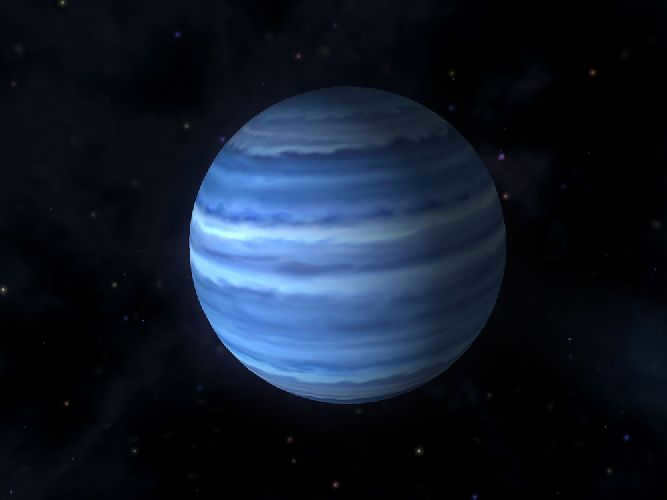

The discovery of Uranus and Neptune, two planets in our solar system, occurred in the 18th and 19th centuries, respectively. While the original suggestion was to name Uranus after the English monarch, the astronomical community opted to follow the tradition of ancient astronomers and name the planet Uranus instead. A similar situation unfolded with Neptune.
What did we discover?
When writing a geography report for fifth grade, it is possible to discuss the origins of the names of the planets in our solar system, which are closely tied to ancient mythology. Each planet is named after a deity from ancient times, with whom it shares certain similarities. The sole exception is Earth, which was not initially regarded as a planet by humans for a significant period of time.
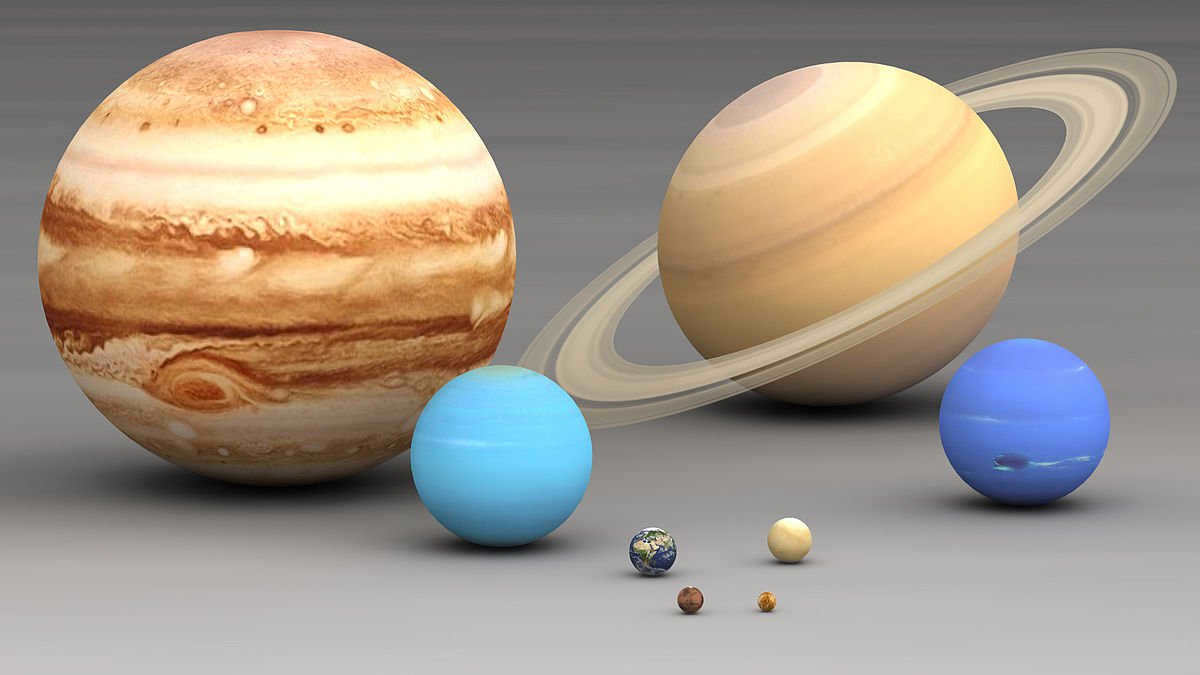
When it comes to the comparative sizes of planets, we have Jupiter, Saturn, Uranus, Neptune, Earth, Venus, Mars, and Mercury.
Most of these planets were given names based on ancient Roman gods, except for one. That exception is Earth.
Our solar system came into existence approximately 4.57 billion years ago through the gravitational contraction of a gas-dust cloud. It consists of the central star, the Sun, along with all the celestial bodies that orbit around it.
The solar system comprises a total of eight planets, with half of them known as the inner planets – Mercury, Venus, Earth, and Mars. On the other hand, the outer or giant planets, namely Saturn, Uranus, and Neptune, lie beyond the ring of minor planets. Most of these planets take their names from ancient Roman gods, with the exception of one.
Mercury
Mercury is the nearest planet to the Sun in our solar system and also the smallest, with a mass of 0.055 times that of Earth. It was given its name after the speedy Roman god of commerce, Mercury, due to its rapid movement across the celestial sphere compared to the other planets.
This planet possesses a unique landscape: aside from the craters on its surface, there are numerous shovel-shaped ridges that stretch for hundreds of kilometers. Scientists believe that these formations originated from tidal deformations during the early stages of Mercury’s history, when its rotations around its axis and the Sun were not in resonance.
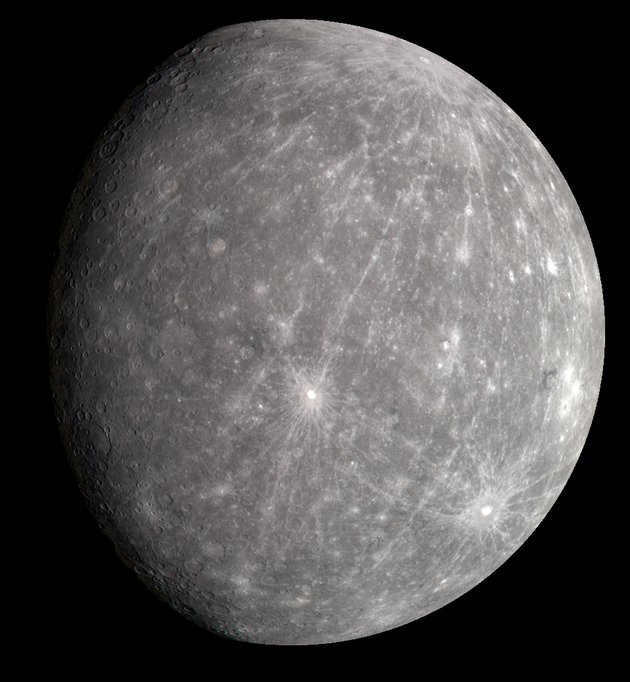
Venus
Venus, the second planet in our solar system, derives its name from the ancient Roman goddess of love. It stands out as the only planet to be named after a female deity, and it shines as the most luminous object in the Earth’s sky after the Sun and Moon. Venus shares many similarities with Earth, such as its size (which is approximately 0.815 times that of Earth), a silicate shell surrounding an iron core, and an atmosphere. Due to these resemblances, Venus is often referred to as Earth’s “sister.”
Indeed, Venus can be described as Earth’s malevolent sibling, as it is enveloped by a thick blanket of toxic sulfuric acid clouds. Additionally, it holds the distinction of being the hottest planet in our solar system, with surface temperatures surpassing 400 °C. This scorching environment is believed to be a result of the greenhouse effect, fueled by its carbon dioxide-rich atmosphere.
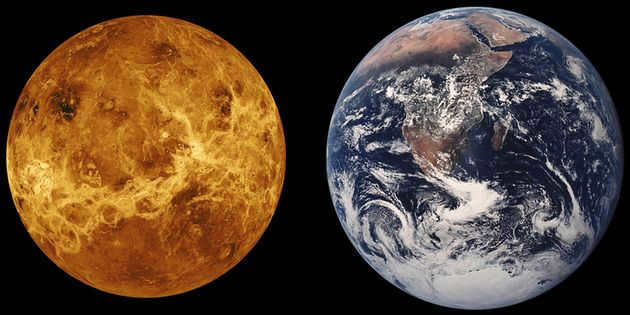
Planet Earth
The planet we call Earth, which is the third planet from the Sun, has been given this name since the year 1400, although the person responsible for naming it remains unknown. The word “Earth” comes from an Anglo-Saxon term from the 8th century, which meant soil or earth. Unlike the other planets in our solar system, Earth’s name does not come from Roman mythology. In addition, Earth is the largest and most dense planet in its group, and its atmosphere is unique due to the presence of free oxygen. This planet also has one natural satellite, which we call the Moon.
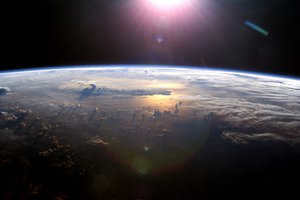
Earth seen through the porthole: 10 breathtaking views captured from the International Space Station
The Red Planet – Mars
Mars is known for its distinctive reddish surface, which is caused by iron oxide. It was named after the Roman god of war, Mars, due to its association with the color of blood. With a mass of 0.107 times that of Earth, Mars is smaller than both Earth and Venus. Its atmosphere mainly consists of carbon dioxide. The planet is dotted with volcanoes, and the largest one, Olympus, is even bigger than any volcano found on Earth (with a height of 21.2 km). Mars has been extensively studied and is the second most explored planet in our solar system, after Earth.
Jupiter
Jupiter, the largest planet in our solar system, derives its name from the ancient Roman god of thunder. Composed primarily of hydrogen and helium, Jupiter boasts a mass 318 times that of Earth, making it more than 2.5 times heavier than all the other planets combined. Moreover, this magnificent planet is accompanied by a total of 80 satellites, with the four largest being Ganymede, Callisto, Io, and Europa. It is worth noting that Ganymede, the largest satellite in the entire solar system, surpasses the size of Mercury.
Saturn
Saturn, renowned for its vast ring system, is the most leisurely planet in our solar system. Initially designated after the ancient Greek deity of time, Kronos, in Roman mythology, Saturn was the equivalent of Cronus, the god associated with agriculture. Over time, the planet adopted the name Saturn. Furthermore, Saturn possesses the lowest density among all planets in our solar system; its average density is even less than that of water or gasoline. The planet is also accompanied by 82 confirmed satellites.
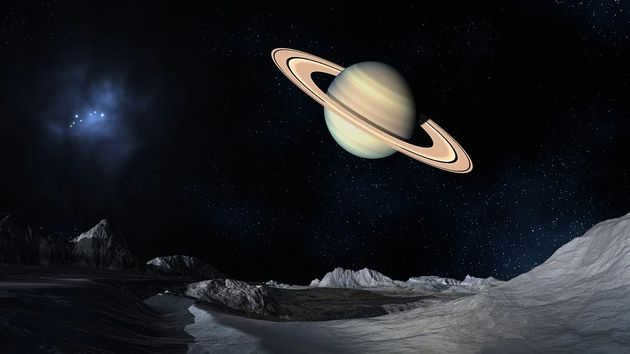
Uranus
The planet Uranus, which is the third-largest in diameter and the fourth-largest in mass in our solar system, derives its name from the Greek sky god Uranus, who is the father of Kronos. Despite having 14 times the mass of Earth, Uranus is considered the lightest among the giant planets. One interesting fact about Uranus is that its equatorial plane is tilted at an angle of about 98 degrees to the plane of its orbit, leading scientists to humorously describe its rotation as “lying on its side”. Furthermore, Uranus has a much colder core compared to the other giant planets and emits very little heat into space.
Neptune
Unveiled in 1846, Neptune became the inaugural planet to be revealed via mathematical computations as opposed to conventional observations. The azure behemoth (its color stems from the tint of its atmosphere) is christened after the Roman deity representing the vast oceans. Although marginally diminutive compared to Uranus, Neptune boasts a greater density and mass (equivalent to 17 times that of Earth).
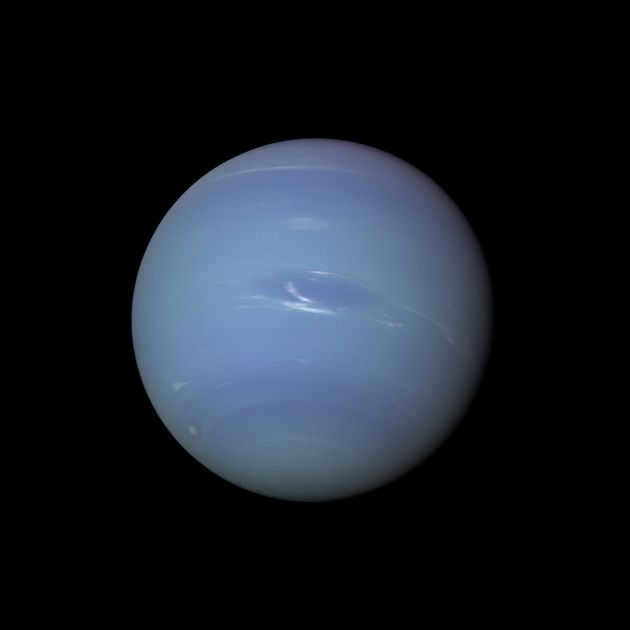
Pluto, originally considered a planet in the solar system from 1920 to 2006, was reclassified as a dwarf planet and is now the largest object in the Kuiper belt. The name “Pluto” was inspired by the god of the underworld and was suggested by Venetia Berni, an eleven-year-old student from Oxford who had an interest in both astronomy and classical mythology. The name was ultimately chosen through a voting process.
In 2015, astronomers Mike Brown and Konstantin Batygin from the California Institute of Technology proposed the concept of a potential ninth planet in our solar system. They discovered evidence pointing to the existence of a massive planet located beyond Neptune’s orbit. This hypothetical planet is estimated to be roughly ten times more massive than Earth and orbits the Sun at a distance approximately 20 times greater than that of Neptune. Its revolution around the Sun takes anywhere from 10,000 to 20,000 years. Mike Brown believes that there is a 90% likelihood that this planet is real. However, this theory has faced significant challenges and skepticism.
The presence of this hypothetical ninth planet could potentially account for certain anomalies in the distribution of transneptunian objects’ orbits. It is hypothesized that this planet would be similar in size to a mini-Neptune, with a diameter two to four times larger than Earth’s.
The night sky is truly breathtaking, adorned with an infinite number of stars. What adds to its allure is the meticulous placement of each star, as if they were deliberately arranged to create captivating patterns in the sky. Throughout history, astronomers have endeavored to unravel the mysteries behind the birth of constellations, galaxies, and individual stars, while bestowing poetic names upon the planets. In ancient times, these celestial formations and planetary bodies were often christened after mythical heroes, animals, and characters from folklore and legends.
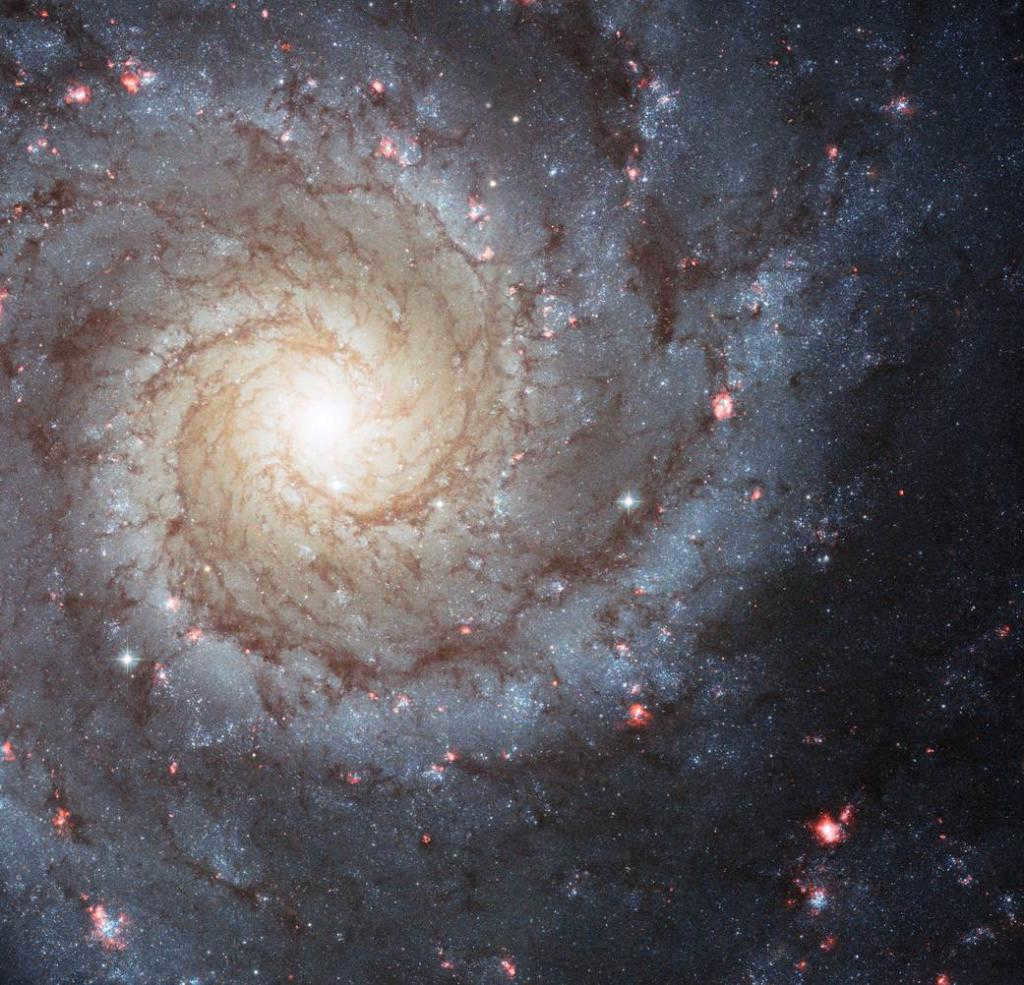
Various Kinds of Stars and Planets
A star is an astronomical object that emits abundant light and heat. It is primarily composed of hydrogen and helium. Celestial bodies maintain equilibrium through their own gravity and internal pressure.
Based on their life cycle and structure, stars can be classified into the following categories:
- Brown dwarf: This category comprises objects with low mass and temperature.
- White dwarf: Stars in the final stages of their lifespan fall into this category. During this stage, the star contracts, cools down, and eventually fades away.
- Red giant
- Young star
- Supernova
- Blue variables
- Hypernova
- Neutron star
- Unique star
- Ultra X-ray stars emit immense amounts of radiation.
Stars come in various tones such as blue, red, yellow, white, orange, and others, depending on their spectrum.
Each planet has a letter classification.
- Class A or geothermal planets belong to this group that consists of all young celestial bodies experiencing intense volcanic activity. If the planet has an atmosphere, it is liquefied and very thin.
- Class B. These planets are also young but larger than Class A.
- Class C. These planets are often covered in ice.
- Class D. This category includes asteroids and dwarf planets.
- Class E. These planets are small and young.
- Class F. Celestial bodies with volcanic activity and a fully metallic core.
- Class M. This category encompasses all Earth-like planets, including Earth.
- Class O, also known as oceanic planets.
- Class P represents ice planets, among others.
Every species encompasses hundreds and thousands of distinct stars and planets, and each cosmic entity possesses its own unique designation. While scientists have yet to determine the precise tally of galaxies and stars in the universe, the billions of celestial bodies that have already been identified serve as a testament to the immense expanse and remarkable variety of the cosmos.
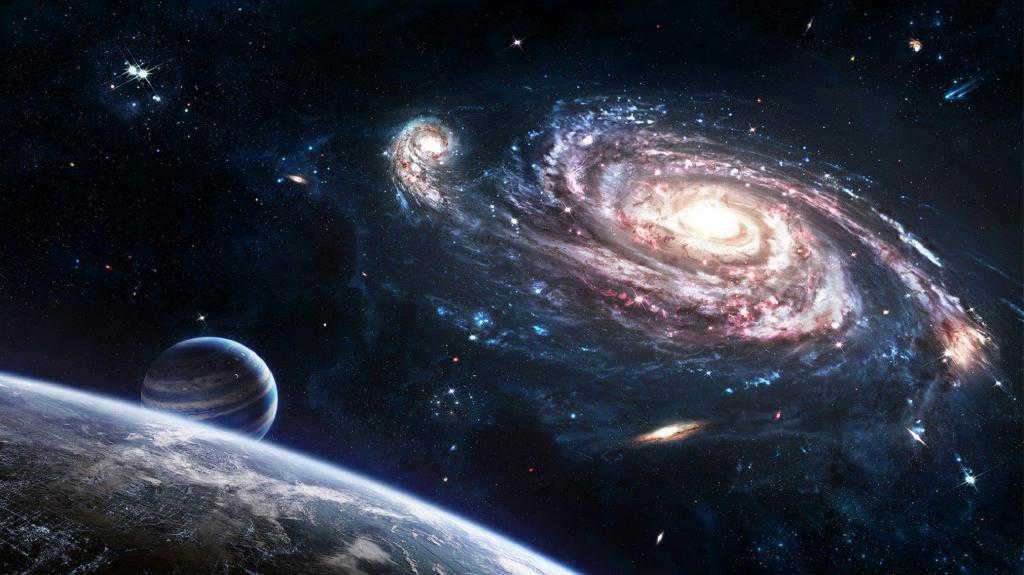
Names of constellations and stars
There are several thousand different stars visible from Earth, and each of them possesses its own unique name. Many of these names were bestowed upon them in ancient times.
The very first star to be named was the Sun – the brightest and largest star, although it is not actually the largest or the brightest in cosmic terms. So, what are some of the most enchanting names given to stars? Some of the most captivating stars with melodious names include:
- Sirius, also known as Alpha of the Big Dog.
- Vega, also known as Alpha Lyra.
- Toliman, also known as Alpha Centauri.
- Canopus, also known as Alpha Kiel.
- Arcturus, also known as Alpha Volopas.
Throughout various historical periods, individuals have bestowed beautiful names upon stars and constellations that have managed to endure to the present day. In the writings of Ptolemy, one can find descriptions of some of the most brilliant stars. According to his accounts, Sirius is a star situated within the Great Dog constellation, specifically in its mouth. In close proximity to the hind legs of the Lesser Dog, one can observe a luminous star known as Procyon. Positioned in the center of the Scorpius constellation, Antares is another notable star. Lyra, on the other hand, features Vega or Alpha Lyra on its shell. Lastly, within the Ascendant constellation, one will find a star with the rather unique name of the Goat or Capella.
In Arab tradition, stars were often named based on their location within a constellation. This led to many stars having names or parts of names that referred to parts of the body, such as body, tail, neck, shoulder, and so on. For example, Ras is known as Alpha Hercules, representing the head, while Menkib is associated with the shoulder. This naming convention extends to stars in various other constellations, including Perseus, Orion, Centaurus, Pegasus, and more.
During the Renaissance, a starry sky atlas was created, which featured both old and new celestial objects. It was compiled by Bayer, who proposed the idea of adding letters from the Greek alphabet to star names. As a result, the brightest star was designated as Alpha, with subsequent stars being labeled as Beta, Gamma, and so on, based on their relative brightness.
With so many beautiful names for celestial bodies, it is challenging to determine the most beautiful star name as each one possesses its own unique charm.
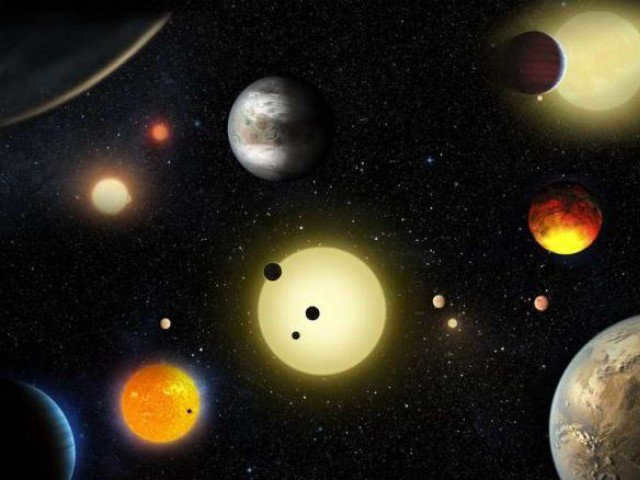
Constellations’ Titles
Ancient times saw the birth of some truly mesmerizing names for stars and constellations, many of which have managed to stand the test of time. The ancient Greeks, in particular, had a knack for bestowing captivating names upon these celestial bodies. Take the Medes, for instance. The Greeks gave them this name, and it has endured for centuries, surrounded by enchanting legends. One such tale tells the story of a king who had a daughter of extraordinary beauty, so much so that even Zeus, the mighty god himself, fell in love with her. However, Hera, Zeus’ wife, was consumed with jealousy and decided to teach the princess a lesson by transforming her into a bear. One fateful day, Callisto’s son returned home and discovered the bear, nearly killing her in the process. Zeus, however, stepped in and saved the day. He whisked the princess away to the heavens, transforming her into the majestic Big Dipper, while her son became the Little Dipper, forever tasked with watching over his mother. Within this constellation, you will find the star Arcturus, a name that translates to “guardian of the bear.” Both the Little and Big Dipper are constellations that never set, always visible in the night sky.
One of the most stunning titles of celestial bodies is the constellation Orion. He was the offspring of Poseidon, the deity of the seas and oceans. Orion gained fame for his prowess as a huntsman, and no creature was able to elude him. In response to this arrogance, Hera, the wife of Zeus, dispatched a scorpion to confront Orion. He perished from the scorpion’s venom, and Zeus elevated him to the heavens, positioning him in such a way that he would forever elude his adversary. As a result, the constellations of Orion and Scorpius never intersect in the nighttime sky.
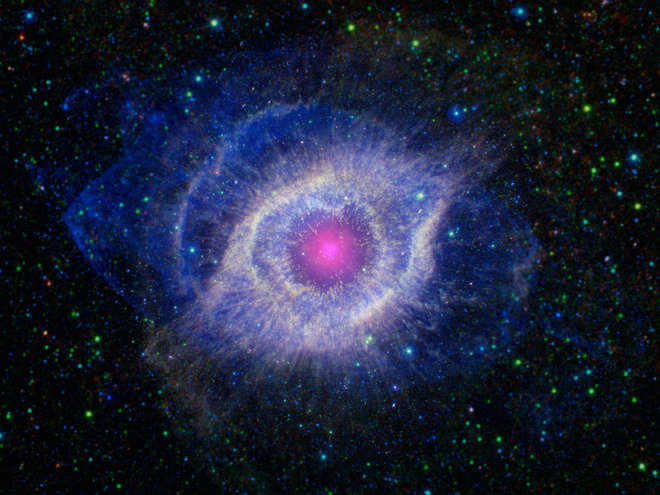
The Origins of the Names of Celestial Bodies
In the present day, modern technology allows scientists to observe and track celestial bodies with great precision. However, in ancient times, the discoverers of planets did not have access to such advanced equipment. As a result, they resorted to giving these astronomical entities beautiful and imaginative names. Today, these planets are commonly referred to by the names of the telescopes that first discovered them, adding a touch of nostalgia and historical significance to their identities.
Mercury
Throughout history, various celestial objects have captured the attention of mankind, leading to the creation of names and descriptions for them. Among these objects is Mercury, a planet that has long fascinated scientists. The ancient astronomers were aware of Mercury’s swift orbit around the Sun, completing a full revolution in just 88 days. It was this remarkable speed that led to the planet being named after Mercury, the fleet-footed god.
Venus
One of the most remarkable names among the planets is Venus. It is the second celestial body in our solar system that is named after the goddess of love, Venus. This planet is renowned for being the second brightest object in the sky, following the Moon and the Sun. Additionally, Venus holds the distinction of being the only celestial body named after a female deity.
Earth
The name “Earth” has been used since 1400, and its origin remains unknown. Interestingly, Earth is the only planet in our solar system that is not named after a mythological figure.
Mars
Among the many captivating names of planets and stars, one that stands out is Mars. This red planet is the seventh largest in our solar system. Nowadays, even young children are familiar with this celestial body.
Jupiter and Saturn
The planet Jupiter was given its name in honor of the deity associated with thunder, while Saturn received its name due to its sluggishness. Initially known as Kronos, it was later renamed, adopting the equivalent name – Saturn, which is also the name of the god associated with agriculture. As a result, this is the title by which this celestial body came to be recognized.
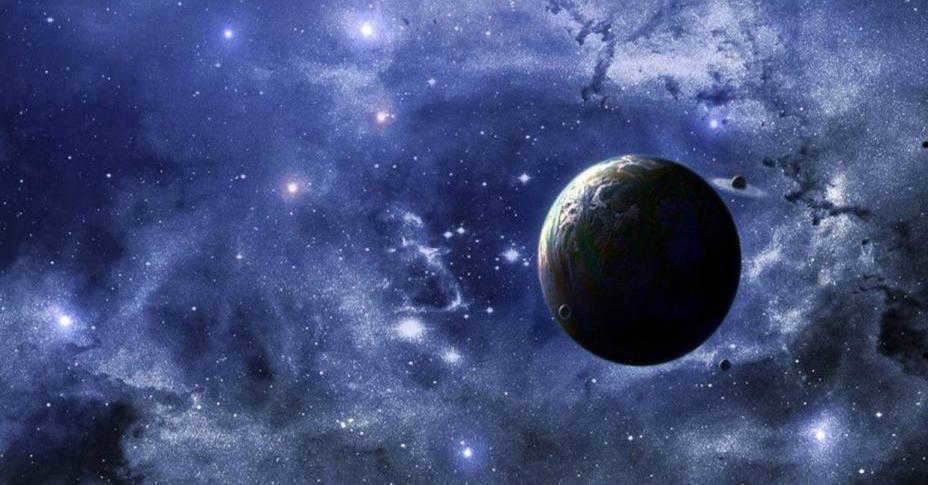
Alternative planets
For many centuries, scientists have focused their studies solely on the planets within our solar system. It was only in 1994 when they first caught sight of other planets beyond our universe. Since then, an extensive range of diverse planets have been identified and documented, with many of them resembling nothing short of the imagination of Hollywood screenwriters. Amongst all the known celestial bodies, the most captivating ones are the exoplanets, which bear a striking resemblance to our own planet Earth. In theory, these exoplanets could potentially harbor life.
Ancient times witnessed the bestowing of the most exquisite designations upon planets and stars, and there is little room for dispute on this matter. However, a few of these celestial entities have acquired unofficial and peculiar nicknames. One such noteworthy example is the planet Osiris, a gaseous entity comprised of oxygen, hydrogen, and carbon, with these substances gradually evaporating from its surface. This occurrence has given rise to a new classification of celestial bodies known as chthonic planets.
Among the splendid names bestowed upon planets in the vast expanse of the universe, Epsilon Eridanus holds a special place. Situated in the constellation Eridanus, this exoplanet revolves in an elongated orbit around its star. It possesses two asteroid belts, which lends it a certain resemblance to our very own Saturn. Epsilon lies at a distance of 10.5 light years from us, and a year on this planet spans 2500 Earth days.
One of the most remarkable names in the universe of planets is Tatooine or HD188753 Ab. Situated in the Swan constellation, it consists of three entities: yellow, red, and orange dwarfs. It is believed that Tatooine is a massive gas giant that orbits its host star in just 3.5 days.
Tres is among the extraordinary planets. It is nearly the same size as Jupiter and has a low density. The planet’s uniqueness lies in the fact that due to the extreme heat, it experiences atmospheric loss, resulting in a tail-like stretching effect similar to that of an asteroid.
The planet with the most stunning name, Methuselah, sounds somewhat demonic. It orbits two objects simultaneously: a white dwarf and a pulsar. Methuselah completes a full revolution in six Earth months.
Recently, scientists made a groundbreaking discovery of planets that bear a striking resemblance to Earth. One such planet, known as Gliese, boasts a nearly identical orbit and resides within the habitable zone of its star, suggesting the potential for life. While the existence of life on Gliese remains unknown, the possibility is certainly intriguing.
Among the vast array of celestial bodies, there is one planet that stands out both for its beautiful name and its extraordinary composition. This planet is none other than Raka-e, also known as the Diamond Planet. The moniker is not a mere coincidence but rather a reflection of its unique characteristics. Calculations conducted by scientists indicate that Rake-e is eight times more massive than Earth, with its primary constituent being carbon. As a result, a significant portion of the planet is comprised of crystalline diamonds, making it the most valuable celestial object in the entire universe. In fact, it is estimated that a mere 0.18% of Raka-e could generate enough wealth to eliminate the entirety of the world’s debts.
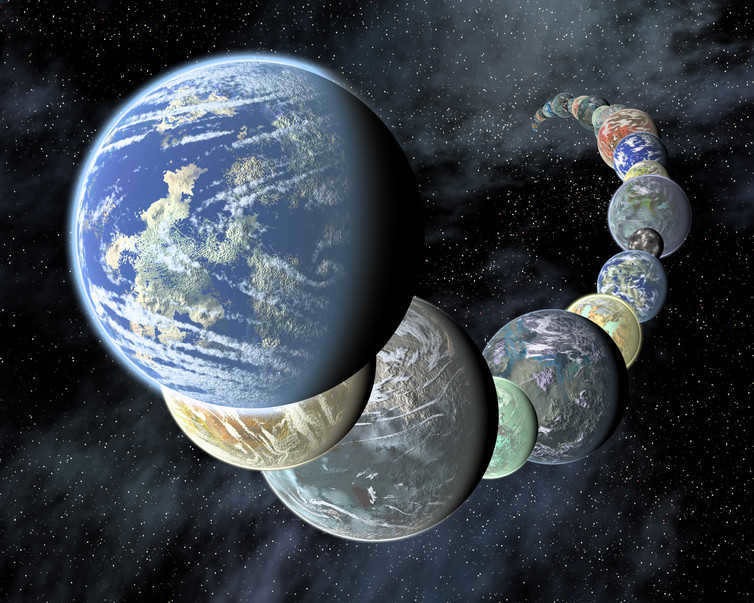
Exploring the vastness of space
When considering the most captivating names of stars in the universe, it is worth delving into the realm of galaxies, nebulae, and other cosmic entities. Among the plethora of extraordinary and alluring names, a few standout objects include:
- The Sunflower Galaxy. This breathtaking system is renowned for its arms composed of brilliant blue-white giant stars.
- The Kiel Nebula. Spanning over 300 light years, this celestial entity consists of dust and gases located approximately 8,000 light years away from our vantage point.
- Vesturlund, a mesmerizing star cluster.
- The Hourglass. This nebula is truly awe-inspiring: the photograph captured by the telescope resembles nothing less than a colossal eye surrounded by a crimson glow. The celestial object earned its name due to the peculiar arrangement of the gas cloud, which tapers in the central region under the influence of stellar winds, while expanding towards the edges. Despite its Hourglass moniker, the image suggests otherwise – gazing upon it, one might imagine a colossal eye peering directly from the depths of the cosmos, observing Earth and all other worlds.
- The Witch’s Broom. Situated 2100 light years away from our planet, this nebula is commonly referred to as the Veil, but owing to its slender and elongated shape, it is often likened to a broom wielded by a witch.
- The Whirlpool. While this nebula appears breathtakingly beautiful in telescope imagery, it harbors numerous enigmas – notably, a vast cluster of black holes.
- The Ring Nebula, also known as Messier 57, is an extraordinary celestial object that was formed from the explosion of a star similar to our Sun. It is composed of glowing layers of gas and remnants of the star’s atmosphere. Interestingly, when observed in images, the Ring Nebula resembles a cosmic eye, although it is far from being as ominous as the Hourglass Nebula.
- The Milky Way is a magnificent galaxy that is home to our own solar system. It is a vast collection of stars, planets, and other celestial bodies, all bound together by gravity. The Milky Way gets its name from its appearance as a hazy band of light stretching across the night sky.
- The Cat’s Eye Nebula is a captivating astronomical object composed of eleven distinct rings that formed prior to the nebula’s creation. It possesses an irregular internal structure, which is believed to be the result of a rapidly moving stellar wind that appears to have ruptured the bubble shell on both ends.
- Omega Centauri is a remarkable globular cluster that contains approximately 100,000 stars. What makes this system truly unique is the presence of red giants and sun-like stars, which can be easily distinguished by their red and yellow hues, respectively. As these stars shed their outer layer of hydrogen gas, they undergo a spectacular transformation and shine brilliantly in a vibrant blue color. These mesmerizing colors can be clearly observed through a telescope.
- Located in the Eagle Nebula, the Pillars of Creation are a breathtaking sight to behold. These towering pillars of gas and dust are a result of intense star formation and serve as nurseries for new stars. The intricate structures and delicate balance captured in this image are truly awe-inspiring.
- The Stephan Quintet is a group of five galaxies engaged in an ongoing cosmic battle. These galaxies are constantly interacting with each other, causing them to stretch, distort in shape, and even tear their arms apart. This continuous struggle creates a captivating and dynamic cosmic dance.
- Butterfly Nebula, unofficially named for its striking resemblance to a butterfly in flight, is the remnants of a dying star. The expansive wings of this celestial butterfly span an impressive distance of two light-years. The gases expelled during the star’s explosive demise emit a vibrant glow, resulting in a truly extraordinary sight of a butterfly gracefully floating through the vastness of space.
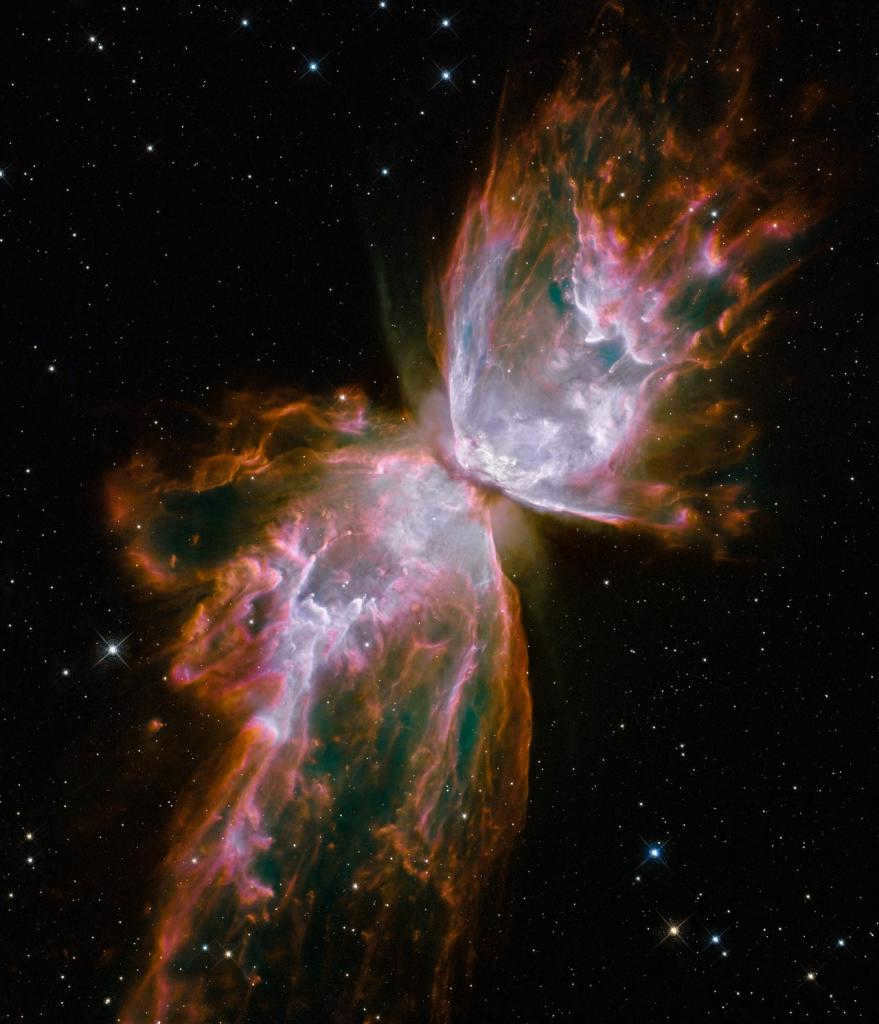
Thanks to modern technology, we now have the ability to explore the far reaches of the Cosmos and observe a wide range of celestial objects, giving them unique names. Among these extraordinary objects is the phenomenon known as War and Peace. This remarkable nebula, characterized by its dense concentration of gas, creates a captivating bubble around a luminous star cluster. The gas is then heated by ultraviolet radiation, causing it to expand outward into the vast expanse of space. The resulting spectacle is a breathtaking display of stars and gas clusters seemingly engaged in a cosmic battle for territory.
Were you aware that Uranus used to go by the name George? It was a celestial body that was uncovered by William Herschel in 1781. In honor of King George III, Herschel bestowed the new planetary entity with the moniker “Georgium Sidus” (which translates to “George’s Star” in Latin). Herschel believed that this name would serve as a reminder of the precise moment when Uranus was first observed, but unfortunately, things didn’t quite go as planned.
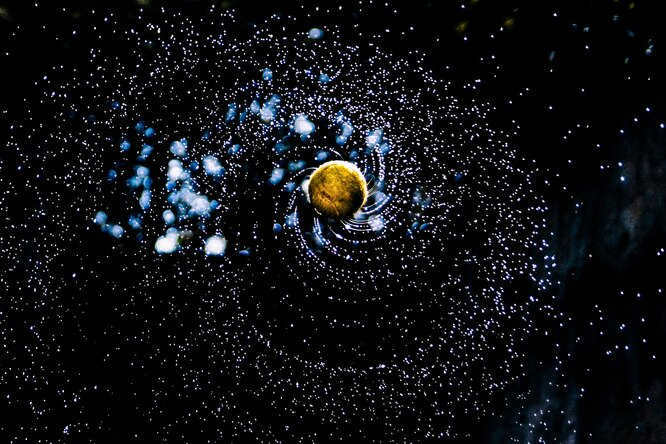
During a short period, books on astronomy used to name the planets as: Mercury, Venus, Earth, Mars, Jupiter, Saturn, and George. However, the end of this remarkable period came when Johann Bode introduced a new name for George – Uranus. Bode’s suggestion was not arbitrary, but rather a homage to a longstanding tradition that had originated centuries ago.
Mercury
Mercury is the Sun’s closest and smallest planet. Its close proximity to our star makes it challenging to observe without the aid of telescopes. Nevertheless, it is still possible to catch a glimpse of Mercury after sunset or before sunrise. Among the five brightest planets, Mercury stands out in the night sky. The Romans were the first to discover this swift-moving planet, which is why it was named after Mercury, the god of trade and travel.
Venus
Aside from the Moon, Venus is the most luminous entity in the nocturnal firmament. This renders it highly conspicuous and enables effortless identification without the need for specialized methods. It was precisely this resplendence that bestowed its appellation upon the cosmic entity. Humans perceived this celestial body as a source of sheer delight, hence endowing it with the designation Venus, after the Roman deity symbolizing love and aesthetic allure.
Mars
Mars, similar to Venus, can be easily seen in the night sky without the aid of a telescope. The ancient Egyptians referred to Mars as “Har Decher,” which translates to “red” in English. This name was likely derived from the planet’s distinct red color caused by the presence of iron oxide on its rugged terrain. Over time, the planet came to be known as Mars, named after the Roman god of war, though the reasons for this choice remained unchanged.
Jupiter
Galileo was the first to observe Jupiter in detail, even though it is the third most luminous object in the night sky. The planet was not well studied in ancient times, but it had various names in different cultures. For instance, in Mesopotamian culture, Jupiter was known as Mulu-babbar, which means “white star”. The Greeks referred to it as “the star of Zeus.”
However, when further exploration of the planet revealed that the other celestial bodies in our solar system already had names from ancient Roman mythology, Jupiter was given its name in honor of the king of the ancient Roman gods due to its immense size.
Saturn
When Galileo observed Saturn through a telescope in 1610, he was astounded by the presence of a pair of peculiar entities flanking the planet. He documented his findings on paper, postulating that Saturn was composed of three distinct bodies. It wasn’t until 1655 that Christian Huygens made the groundbreaking discovery of the planet’s rings. The Romans christened the planet Saturn after the Roman deity associated with farming and prosperity, who was believed to wield a sickle in one hand and sheaves of wheat in the other. Remarkably, this allegory aligned with Galileo’s observations.
Neptune
Due to its vast distance, Neptune is not visible to the naked eye from our planet Earth. Interestingly, this celestial body was actually discovered through mathematical calculations made by scientists John Adams and Urbain Leverrier. It was Johann Galle who confirmed their theory in 1846. Initially, Galle planned to name the planet after Leverrier, but the International Astronomical Community had a different opinion. As a result, Neptune was named after the Roman deity who ruled over the seas.
TechInsider is an online edition that provides news and information about the latest technology trends. It was founded by the company “Fashion Press” LLC, which is located at 119435, Moscow, Bolshoi Savvinsky per. 12, p. 12, str. 6, on the 3rd floor, room II. The editorial office of TechInsider is also located at the same address, specifically at p. 6, str. 6, on the 3rd floor, room II. The Editor-in-Chief of TechInsider is Nikita Vasilenok. You can contact the editorial office via email at [email protected] or by phone at +7 (495) 252-09-99. TechInsider is an information product that is suitable for readers aged 16 and above. It is registered with the Federal Service for Supervision in the Sphere of Communications, Information Technologies and Mass Media. The registration number and date of decision on registration are series EL No. FS 77 – 84123, dated November 09, 2022.
© 2007 – 2023 "Fashion Press" Ltd.
By posting content on the Website, the User gives "Fashion Press" LLC the right to use, reproduce, distribute, create derivative works, and publicly display the content for free.
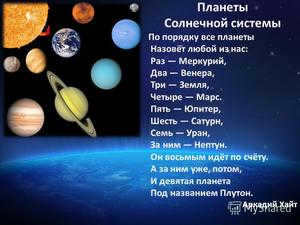
The solar system is our interstellar neighborhood, and the planets within it are our dwellings. It is agreed that each dwelling should possess its own unique designation.
In this article, you will acquire knowledge about the precise positioning of the planets, as well as the reasons behind their particular names.
Let us commence with the Sun.
The focus of today’s discourse is the Sun. It acquired its name, according to certain sources, in homage to the Roman deity Sol, who represented the celestial luminary. The linguistic root “sol” can be found in nearly all languages of the world and, in some manner or another, evokes an association with the contemporary concept of the Sun.
From this extraordinary celestial body, the proper arrangement of entities commences, each possessing its own distinctive characteristics.
Mercury
The primary entity that captures our attention is Mercury. This celestial body is named after the divine messenger Mercury, renowned for his extraordinary swiftness. In a similar vein, Mercury itself is not lacking in speed – due to its strategic positioning, it revolves around the Sun at a faster pace than any other planet in our solar system, making it the smallest “resident” that encircles our luminary.
Fascinating facts:
- Mercury follows an elliptical orbit around the Sun, in contrast to the circular orbits of other planets, and this trajectory is subject to constant fluctuations.
- Mercury possesses an iron core that constitutes 40% of its mass and 83% of its volume.
- Mercury is visible in the night sky without the aid of any optical instruments.
Venus
"Home" number two in our system. Venus was named after the goddess. – the stunning protector of love. Venus is just a bit smaller than our Earth. Its atmosphere consists mostly of carbon dioxide. There is a small amount of oxygen in its atmosphere, though.
Fascinating information:
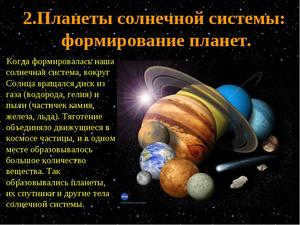
- Venus, like Mercury, is visible to the naked eye.
- The surface temperature of Venus can reach 475 degrees Celsius, making it the hottest object.
- 70% of Venus’ surface is covered with water, while the remaining 30% consists of fully formed continents, albeit lifeless ones.
Planet Earth
Our planet Earth is the only known celestial body where life exists. It is the third planet in our solar system and provides a comfortable environment for living organisms. Earth possesses all the necessary elements for life, including suitable temperature, an abundance of oxygen, and plentiful water. The name of our planet originates from the Slavic word “-zem,” which means “low.” This name may have been given in ancient times because Earth was believed to be flat, or “low,” in comparison to the vastness of space.
Fascinating Facts about Earth:
- The Moon, Earth’s satellite, is the largest satellite among all the satellites of the planets in the Earth group and the dwarf planets.
- Earth is the most dense planet within the Earth group.
- Earth and Venus are sometimes referred to as sisters due to their shared possession of atmospheres.
Mars
The planet Mars, which is the fourth planet from the Sun, was named after the ancient Roman god of war due to its distinctive red color. This color is not actually blood-like, but is caused by the high concentration of iron on its surface. Despite being smaller than Earth, Mars possesses two natural satellites known as Phobos and Deimos.
Did you know?
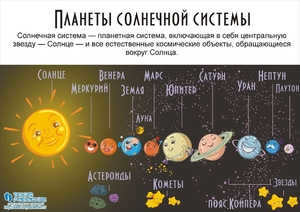
- In accordance with his role as the god of war, Mars is accompanied by two formidable satellites. “Phobos” and “Deimos” are Latin terms meaning “fear” and “terror.”
- There is a belief that life may have existed or currently exists on Mars, based on the discovery of water on the planet.
- Mars has been extensively studied, except when considering Earth.
The region of space known as the asteroid belt
is located between Mars and Jupiter. It serves as a dividing line between the inner rocky planets and the outer gas giants. Certain researchers hypothesize that the asteroid belt may have originally been a single planet that was shattered into pieces. However, the prevailing belief is that the asteroid belt is a result of the cosmic event known as the Big Bang, which gave rise to the formation of our galaxy.
Jupiter
Jupiter is the fifth “house” in the Solar System. With a mass two and a half times greater than the total mass of all other planets in the galaxy, Jupiter is truly a heavyweight. The awe-inspiring size of this planet is likely the reason behind its name, which pays homage to the ancient Roman king of the gods.
Fascinating Trivia:
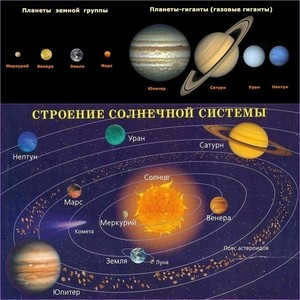
- There are numerous scientific debates surrounding Jupiter. Some scientists propose that Jupiter is a failed star. In order to become one, it would need to increase its current weight by 88 times.
- Mapping the movements of satellites around Jupiter is extremely challenging due to the large number of satellites orbiting it, as many as 67. This is the highest number of satellites recorded in our solar system. Four of these satellites – Ganymede, Europa, Io, and Callisto – could be considered dwarf planets. In fact, Ganymede is even larger than Mercury!
- One of Jupiter’s satellites, Io, is one of the three satellites that has an atmosphere.
Saturn
Saturn is called after the Roman god of farming. The sickle is the symbol of Saturn. The sixth planet is well-known for its rings. Saturn has the least density among all the natural satellites that orbit the Sun. Its density is even lower than that of water.
Fascinating information:
- Saturn has 62 satellites. The most renowned of them are: Titan, Enceladus, Japetus, Dione, Tefia, Rhea, and Mimas.
- Saturn’s satellite Titan has the most substantial atmosphere among all satellites in the system, and Rhea has rings just like Saturn itself.
- The composition of chemical elements in the Sun and Saturn are more similar than those in the Sun and other objects in the solar system.
Uranus
The seventh “house” in our solar system, Uranus is often referred to as the “sluggish planet” due to its unique rotation. Unlike other planets, Uranus lies on its side, with an axis tilt of 98 degrees. In addition, Uranus is the lightest planet in our system and its moons are named after characters from the works of William Shakespeare and Alexander Pope. The planet itself is named after the Greek god of the sky.
Fascinating facts:
- Uranus boasts a total of 27 satellites, with some of the most well-known being Titania, Ariel, Umbriel, and Miranda.
- The temperature on Uranus can plummet to a bone-chilling -224 degrees Celsius.
- A single year on Uranus is equivalent to a staggering 84 years on Earth.
Neptune
Neptune, the eighth planet in our solar system, is located in close proximity to its neighboring planet Uranus. This celestial body is aptly named after the Roman god of the seas and oceans, due to its striking deep blue hue that caught the attention of researchers.
Fascinating tidbits:
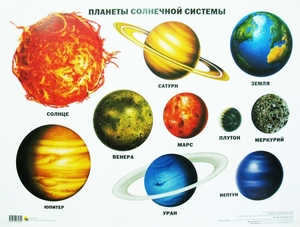
- Neptune’s discovery was based on mathematical calculations rather than direct observations, setting it apart from other planets in our solar system.
- Compared to other gas giants, Neptune has a relatively small number of satellites, with only 14 known moons.
- Triton, one of Neptune’s moons, is the third moon in our solar system to have its own atmosphere.

